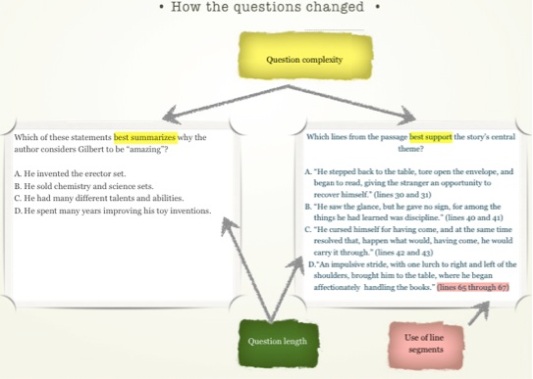Gone are the days in which state assessments posed questions like;
- What is the passage mainly about?
- What is the author’s purpose in writing this passage?
- Which word best describes how the character feels?
- Which event happens first?
- Where does the story take place?
Especially in New York. One of the leading states moving quickly on the Common Core initiatives great change has come, especially to the new state wide assessments. Such questions like those above used to be at the crux of what we as educators focused on during those precious days leading up to the state exams. However, with the continued infusion of the Common Core and the push for more rigor, more relevance, more cognitive engagement, the bar has been raised, and raised again and then pushed a little higher to match the message that is being preached. But what does that mean for our students? How do we navigate through a test filled with the complex questions and even more confusions answer choices?
First and foremost, we need to compare the past to the present.
If you look at the 2010 test question it is a DoK level 1 (lowest level) type of question. Students are asked to basically recall from the passage. Words like best, summaries, describe, most likely, least likely were very common. The thought process was not so complex. Think about it, “Which statement best summarizes why the author considers Gilbert to be “amazing”? The answer choices were even brief. One sentence. Summarizes from the text. Basic recall. While there may have been a bit of work by the students to draw conclusions or infer, in general a student would merely have to read and be able to recall facts from the test.
However, with the adaptations to the tests to meet the demands of the Common Core, question complexity has increased. Students are expected to do much more than merely summarize. Students are expected to know how to use “line numbers,” be able to decide the authors purpose, to decide the central theme, and then decipher which complex sentence best supports it. An expectation for complex thinking for sure. Something that may just be too far out of reach for students who are served by an IEP or those who have only been in the country for a year or two.
Unfortunately, I don’t imagine that the past will be back to haunt us any time soon. Rather states like New York, North Carolina, and Massachusetts, seem to be leading the way in providing us with some idea as to the complexity in which we can expect on the new state tests.
As educators it is our responsibility to tap into these resources and offer our students with every possible opportunity of exposure to questions and activities that most prepare them for high stakes testing. We must support them with the transition as much as possible and not assume that they will “figure it out.”
While the argument remains against teaching to the test, if our students can’t decipher their way through mandatory testing then it does not really matter how well we have spent the year educating them. In their moment where they need to shine we need to make sure that we have capitalized on every possible teachable moment. Then and only then will they be ready.
*Note: Test questions take from the 2010 ELA Test in Grade 8 from NYSED.gov and sample test question from Grade 8 on Engageny.org.

